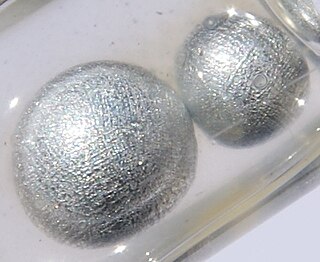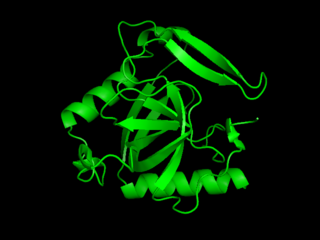| Inorganic H+ pyrophosphatase | |||||||||
|---|---|---|---|---|---|---|---|---|---|
| Identifiers | |||||||||
| Symbol | H_PPase | ||||||||
| Pfam | PF03030 | ||||||||
| InterPro | IPR004131 | ||||||||
| TCDB | 3.A.10 | ||||||||
| OPM superfamily | 390 | ||||||||
| OPM protein | 4a01 | ||||||||
| |||||||||
Two types of inorganic diphosphatase, very different in terms of both amino acid sequence and structure, have been characterised to date: soluble and transmembrane proton-pumping pyrophosphatases (sPPases and H(+)-PPases, respectively). sPPases are ubiquitous proteins that hydrolyse pyrophosphate to release heat, whereas H+-PPases, so far unidentified in animal and fungal cells, couple the energy of PPi hydrolysis to proton movement across biological membranes. [1] [2] The latter type is represented by this group of proteins. H+-PPases are also called vacuolar-type inorganic pyrophosphatases (V-PPase) or pyrophosphate-energised vacuolar membrane proton pumps. [3] In plants, vacuoles contain two enzymes for acidifying the interior of the vacuole, the V-ATPase and the V-PPase (V is for vacuolar). [2]

In enzymology, an inorganic diphosphatase (EC 3.6.1.1) is an enzyme that catalyzes the chemical reaction

Proteins are large biomolecules, or macromolecules, consisting of one or more long chains of amino acid residues. Proteins perform a vast array of functions within organisms, including catalysing metabolic reactions, DNA replication, responding to stimuli, providing structure to cells and organisms, and transporting molecules from one location to another. Proteins differ from one another primarily in their sequence of amino acids, which is dictated by the nucleotide sequence of their genes, and which usually results in protein folding into a specific three-dimensional structure that determines its activity.

In chemistry, a pyrophosphate are phosphorus oxyanions that contain a P-O-P linkage. A number of pyrophosphate salts exist, such as Na2H2P2O7, as well as the normal pyrophosphates. Often pyrophosphates are called diphosphates. The parent pyrophosphates are derived from partial or complete neutralization of pyrophosphoric acid. Important salts are disodium pyrophosphate and tetrasodium pyrophosphate. The pyrophosphate bond, as found in ATP, is very important in biochemistry.
Two distinct biochemical subclasses of H+-PPases have been characterised to date: K +-stimulated and K+-insensitive. [1] [3]

Biochemistry, sometimes called biological chemistry, is the study of chemical processes within and relating to living organisms. Biochemical processes give rise to the complexity of life.

Potassium is a chemical element with symbol K and atomic number 19. Potassium is a silvery-white metal that is soft enough to be cut with a knife, with little force. Potassium metal reacts rapidly with atmospheric oxygen to form flaky white potassium peroxide in only seconds of exposure. It was first isolated from potash, the ashes of plants, from which its name derives. In the periodic table, potassium is one of the alkali metals, all of which have a single outer-shell valence electron that is easily removed to create an ion with a positive charge, a cation, that combines with anions to form salts. Potassium in nature occurs only in ionic salts. Elemental potassium reacts vigorously with water, generating sufficient heat to ignite hydrogen emitted in the reaction, and burning with a lilac-colored flame. It is found dissolved in sea water, and occurs in many minerals such as orthoclase, a common constituent of granites and other igneous rocks.













